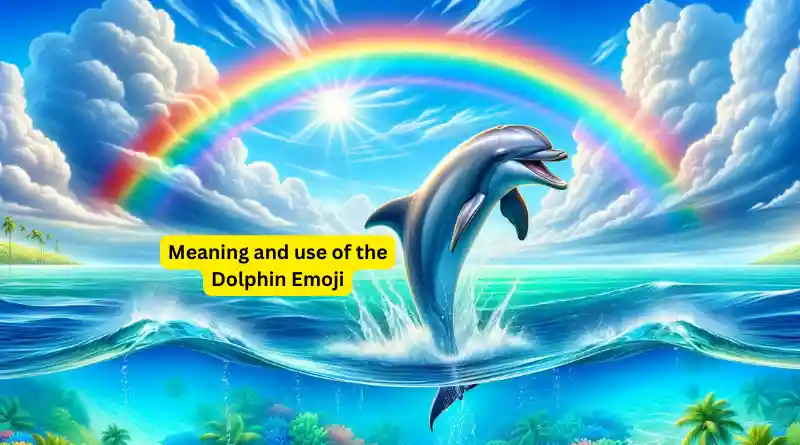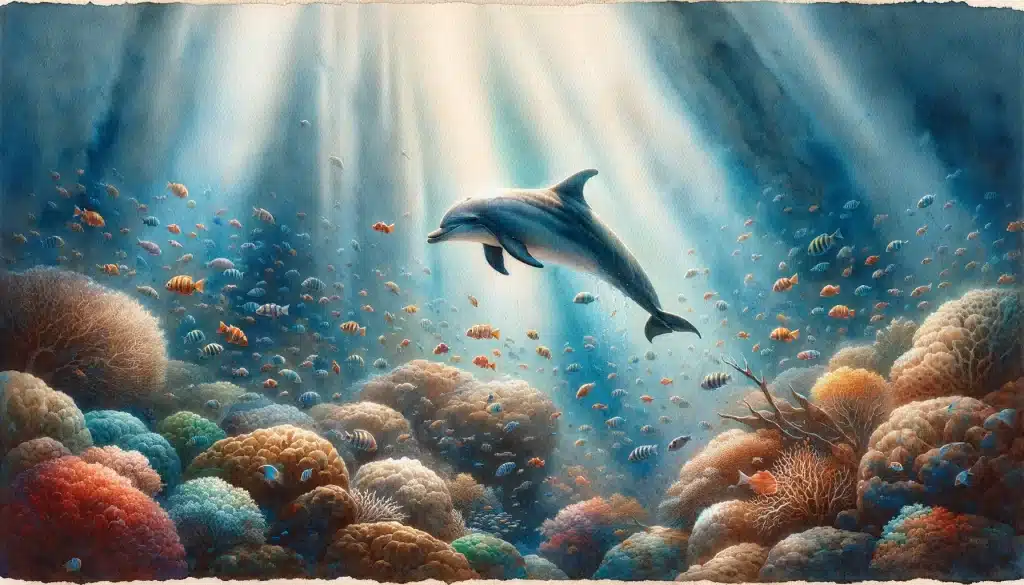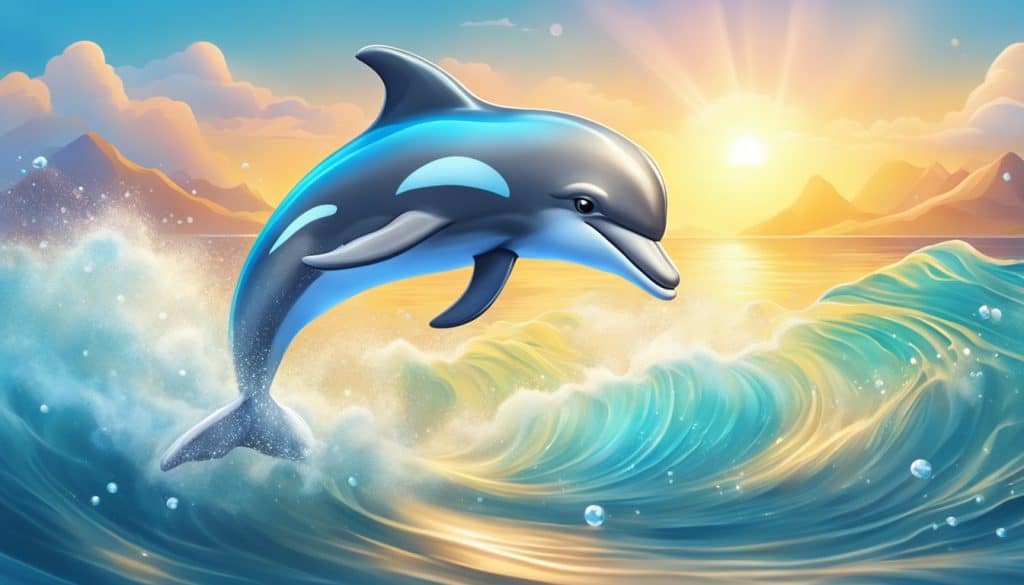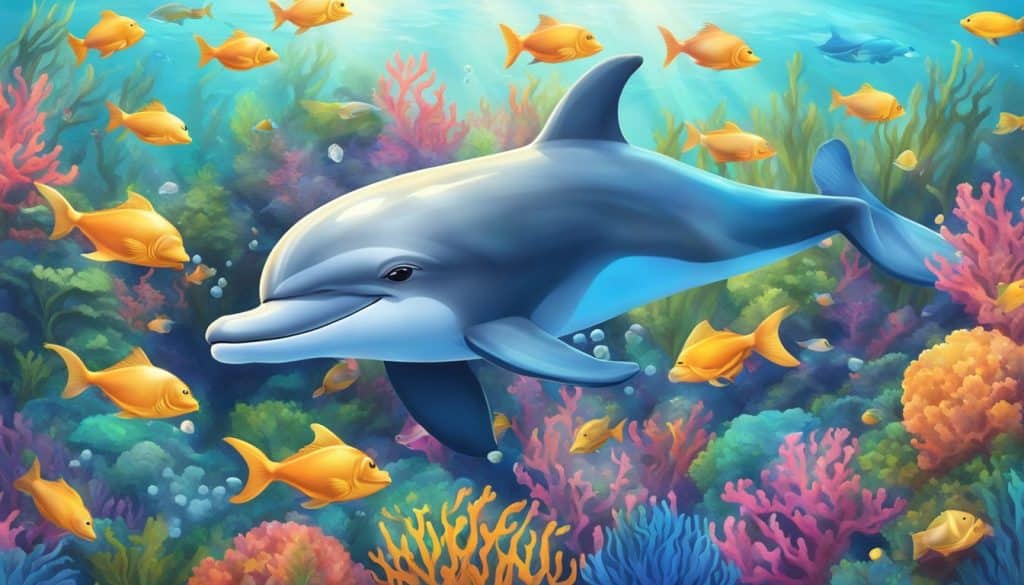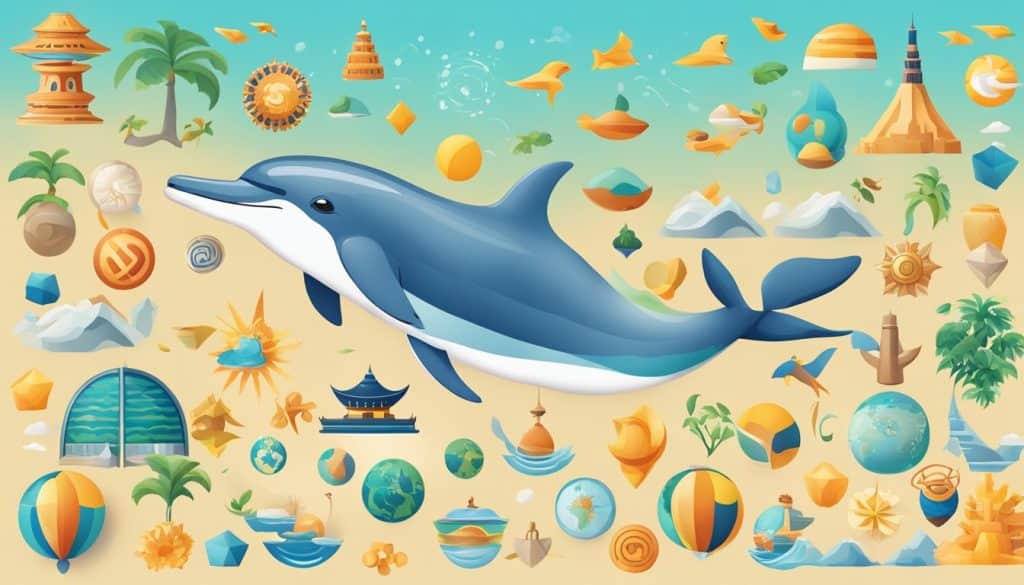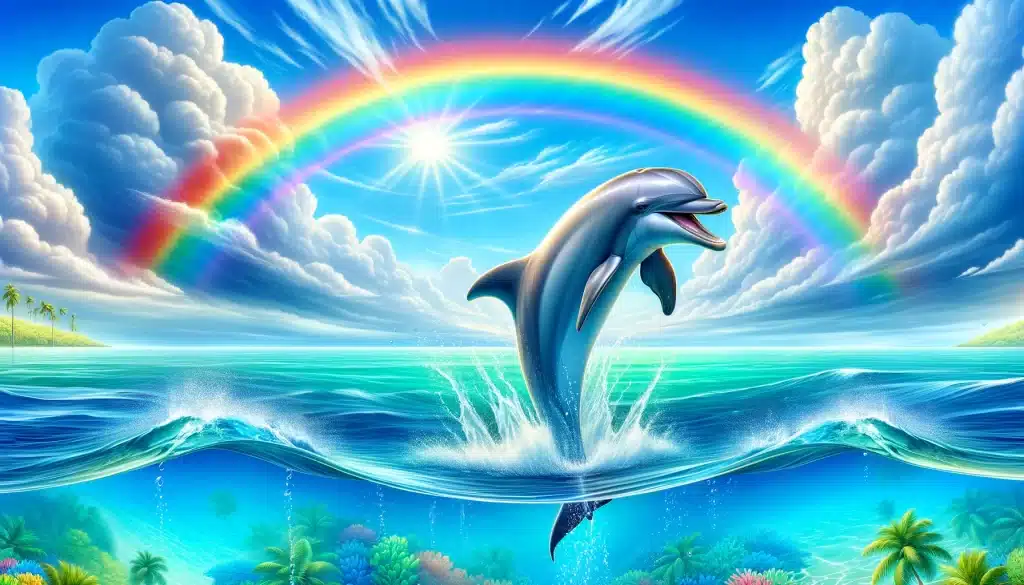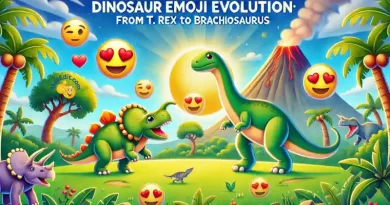Dolphin Emoji 🐬- Usage, signification, et faits amusants
Emojis have become an integral part of online communication, often conveying emotions and ideas that words alone can’t capture. Among the plethora of symbols available, the dolphin emoji stands out among the émojis d'animaux due to its playful design and widespread appeal. Notably, this emoji captures the essence of the dolphin’s intelligence and sociability, which has earned it a special place in our digital conversations.
Evolving from simple emoticons to more detailed representations, the dolphin emoji is now a staple in unicode character sets used across various platforms. It’s designed to depict the friendly and playful nature of the real-life marine mammal in a format that’s easily recognizable and universally understood in social media interactions. As digital communication continues to evolve, emojis like the dolphin play a crucial role in adding nuance and personality to our online dialogue.
Principaux enseignements
- The dolphin emoji is a playful symbol that enhances digital communication.
- With its design rooted in unicode, the emoji is widely recognizable.
- It holds significance in social media as a representation of playfulness and intelligence.
Origin and Meaning
Diving into the Origin and Meaning of the dolphin emoji, we find a symbol that captures the essence of one of nature’s most intelligent and joyful creatures. This emoji isn’t just a digital icon; it represents the playfulness and intelligence of the marine mammal it portrays.
Symbolism in Nature
The dolphin emoji encapsulates the joyfulness and grace of dolphins in nature. Dolphins are widely recognized as highly intelligent creatures capable of complex emotions and social behaviors. Their love for playful antics and acrobatic displays translates perfectly into the digital realm as an emoji. It’s no wonder that when people think of dolphins, they often associate them with happiness and a carefree spirit.
Importance culturelle
Culturally, the dolphin has symbolized guidance and protection, as well as a connection with the water’s wisdom and healing powers. The dolphin emoji, frequently used in texts and on social media, conveys messages laced with happiness, a fun-loving attitude, and a love for the ocean. Moreover, the athletic prowess of dolphins has earned them a spot as a mascot for teams, as seen with the Miami Dolphins professional football team, solidifying their cultural impact even in sports.
So, every time someone uses a dolphin emoji, they’re not just sending a cute image; they’re sharing a symbol that is deep-rooted in nature and rich with cultural meaning.
Design and Appearance
When chatting online, the dolphin emoji instantly brings a splash of marine life into our conversations. Its design captures the spirit of these joyful creatures with vibrant colors and dynamic shapes that vary across platforms.
Color and Shape
The dolphin emoji is commonly portrayed in a light-blue color with a white belly, embodying the sleek and playful nature of the aquatic mammal. Its characteristic look includes a profile facing left, with a prominent dorsal fin and a neatly curved tail, encapsulating their elegant swift movements in the water. This emoji usually shows the dolphin in mid-leap, a nod to their acrobatic displays.
Variantes de la plate-forme
Different platforms have their unique interpretations of the dolphin emoji, leading to slight variations that reflect their design ethos:
- Pomme : A realistic dolphin with gradient shading and a touch of whimsy.
- Google : A more cartoon-like design with bold colors and a friendly appeal.
- Facebook : Leans towards a simpler, yet highly recognizable depiction.
- Twitter : Offers a minimalist and stylized dolphin that’s instantly recognizable.
- Instagram (owned by Facebook): Shares its design philosophy, aiming for simplicity and instant recognition.
- Microsoft : Focuses on a playful rendition, often with a thicker outline.
As I swap between devices and services, I always find it fun to see how each platform adds its own personality to the dolphin emoji, keeping my digital conversations fresh and engaging.
Détails techniques
In this section, I’m going to dive into the nuts and bolts of the dolphin emoji. We’ll look at its representation in Unicode and the specific codes you can use to integrate the emoji into your HTML and CSS projects. So, let’s get started with the Unicode information.
Unicode Information
The dolphin emoji, much like other emojis we use every day, is defined by a specific Unicode standard. In particular, the dolphin emoji was added in Unicode 6.0, which came out in October 2010. The point de code assigned to the dolphin emoji is U+1F42C. Unicode provides consistency across various platforms, ensuring that the dolphin emoji you send from your phone appears the same on someone else’s device.
HTML/CSS Codes
As for web development, whether you’re sprucing up your personal blog or adding some flair to a website, you’ll need to know the HTML and CSS codes to display the dolphin emoji. The HTML hex notation for the dolphin emoji is 🐬, and the HTML dec code is 🐬. Use these codes in your HTML document to ensure that the dolphin emoji is displayed correctly on web pages.
Usage and Demographics
As someone deeply interested in digital communication, I find the use and demographic spread of the dolphin emoji particularly fascinating. It’s intricate how such a simple symbol can mean so much across different platforms and influence social interactions.
Communication
When I text my friends, throwing in a dolphin emoji adds a splash of joy and playful vibes. It’s not just a cute picture of an animal with a short snout and a dorsal fin—it embodies the fun and sociable nature of bottlenose dolphins. In my experience, its use spans across various social media platforms, where the emoji acts as a shorthand for excitement and a love for marine life. Considering the gray creature’s friendly reputation, it’s no surprise people use it to convey a tone of lightheartedness in digital expression.
Digital Expression
Now, expressing ourselves online is a big deal, and the dolphin emoji 🐬 taps right into that. It’s amazing for conveying positive emotions without requiring lengthy text explanations. On digital platforms frequented by teens, I’ve seen the dolphin emoji used to symbolize community and social connections, probably because dolphins are such social creatures themselves. Plus, it’s universally recognized, transcending language barriers and bringing a slice of oceanic fun into our messages.
Associated Symbols
When it comes to expressing our love for the ocean and marine life through texting, emojis are our go-to symbols. They enable us to add a splash of fun and share our affinity for sea creatures with friends. Let’s dive into some of the most closely related symbols to the dolphin emoji.
Related Aquatic Emojis
The ocean is teeming with life, and so is the emoji library that represents it. When I’m not using the playful dolphin emoji, I often turn to its aquatic companions. First and foremost is the émoji requin, which brings a sense of awe and sometimes a hint of danger to any conversation. Similarly, the whale emoji often surfaces in my messages, signifying the majesty of the sea’s gentle giants.
Fish emojis are plentiful as well. The tropical fish emoji is a definitive choice to represent the vibrant life beneath the waves, perfect for exuding a tropical vibe. Its colorful appearance complements the dolphin emoji, both symbolizing the diversity of marine life. Additionally, the general fish emoji is a versatile icon, representing everything from dinner plans to a passion for aquariums.
Animal-Themed Emojis
Stepping away from the water, the emoji world includes a vast array of animal-themed icons. These provide a universal language to share our encounters with the animal kingdom or our favorite wildlife. Many of these emojis pair well with the dolphin when composing playful or nature-focused messages.
For a broader zoological reach, we often combine land animals with our favorite aquatic emojis. For instance, when chatting about a zoo trip, the dolphin can leap alongside the tiger emoji, elephant emoji, or even the monkey emoji to depict an entire realm of biodiversity. These animal emojis enrich our virtual expressions and can help to convey our enthusiasm for all creatures, both on land and in the sea.
Impact culturel
As we dive into the world of digital communication, it’s clear that the dolphin emoji has made quite a splash. This symbol has swum beyond its use as a mere pictograph, influencing various facets of culture in unexpected ways.
In Popular Media
Sports and Branding
Sports teams and brands have also harnessed the congenial spirit of the dolphin. Take the Miami Dolphins, for example — an NFL team that has embraced the dolphin’s image not only as their mascot but also as a symbol of agility and teamwork. In branding, companies often seek attributes like longevity and grace, qualities effortlessly embodied by the dolphin icon. Brands operating in diverse industries from swimwear to environmental conservation have incorporated dolphin imagery to convey a message of kindness and a commitment to nature.
Controversies and Misuse
In the realm of digital communication, the émoji dauphin carries with it a wave of misinterpretation et controversy. On social media platforms, this playful symbol can land users in turbulent waters. For instance, I’ve seen the dolphin emoji used in various contexts, from representing a love for marine life to an inside joke among friends. Yet, this same versatility can lead to misunderstandings across different cultures and age groups.
Misuse occurs when you use these emojis beyond their intended meaning. I’ve observed the dolphin emoji appearing in jokes or messages where it takes on a connotation not universally accepted, potentially leading to unintended offense or confusion. Especially in communication among teenagers, the implied meaning can warp drastically from its original cheerful representation of the aquatic animal.
In some cases, the controversy churns up when emojis take on alternate meanings that aren’t as innocent as a dolphin leaping through the waves. For instance, in the médias sociaux ocean, emojis can mask innuendos or controversial topics. Just as emojis can cause controversies, the dolphin emoji isn’t immune to this undercurrent—the inherent ambiguity of emojis offers a back-channel for messaging that isn’t always clear.
Additionally, the rapid evolution of online communication norms means that an emoji’s meaning can shift like the tide. Staying aware of these changes is vital. For instance, the more I engage with different online communities, the more I realize that what’s acceptable in one digital circle might not be in another. So, while the dolphin emoji is mostly seen as fun and innocent, it’s always worth considering the context to avoid choppy conversational seas.
Future of the Dolphin Emoji
In the ever-evolving landscape of digital communication, I’ve noticed how the iconic dolphin emoji 🐬 remains a favorite among users for its playful and friendly symbolism. With tech companies continuously updating their emoji catalogues, we could anticipate seeing even more nuanced variations of this beloved marine mammal.
Firstly, variations in color and design seem likely. As platforms aim to be more inclusive and diverse, it’s not far-fetched to imagine a broader spectrum of dolphin types represented in the emoji keyboard. Plus, with the integration of 3D technology, future iterations might even showcase the dolphin in different actions, such as jumping or playing with a ball.
Emoji Personalization is another trend gaining traction. Users, especially teens like us, crave ways to express our individuality. In the near future, I wouldn’t be surprised to have the option to customize our dolphin emoji, adding accessories like sunglasses or a hat, to better reflect our mood or style.
Integration with Augmented Reality (AR) is another exciting realm. Imagine sending a message where a virtual dolphin leaps out of the screen. Companies are investing heavily in AR, and emojis are sure not to be left behind. This feature could revolutionize how we share emotions and experiences virtually.
Lastly, the rise of Emoji-Based Communication Platforms could provide a space where the dolphin emoji can evolve. These platforms might develop new functions, like the dolphin emoji initiating dolphin-themed games or activities within the chat.
In short, the dolphin emoji has a vibrant future ahead. With advancements in technology and a keen understanding of user engagement, it’s set to become even more dynamic and interactive. Stay tuned for a wave of updates that are sure to make a splash in our digital vocabularies!
Questions fréquemment posées
When I send a dolphin emoji, it’s often to showcase playfulness or to express my admiration for these intelligent marine animals. Some folks might use it to refer to personality traits like intelligence and friendliness. Other times, it pairs well with topics related to the ocean or water activities.
On my iPhone, I simply tap the emoji keyboard to bring up my emoji options. If I can’t spot it right away, I’ll use the search feature, typing “dolphin” to find it quickly.
It could be their way of saying let’s have some fun, or they might be sharing their love for ocean creatures. Sometimes, it’s just a playful gesture or an indication that they’re in high spirits and feeling carefree.
Yes, the dolphin emoji is available on WhatsApp, and while the design may vary slightly from platform to platform, its meaning remains consistent—a playful or aquatic theme. Whether it’s iOS, Android, or any other platform, the essence of the dolphin emoji transcends these small design differences.
For digital design projects, fantastic high-quality dolphin emoji PNGs are readily available on graphic resource websites. I tend to look for sites that offer free downloads or I check out some creative commons libraries for the best picks.
How do I locate and use the dolphin emoji in various text applications?

